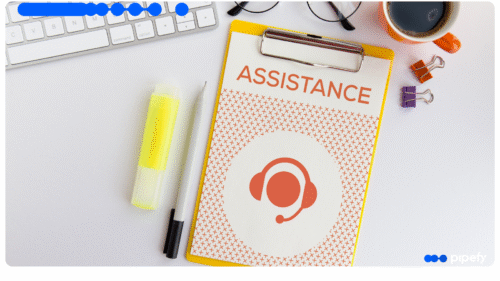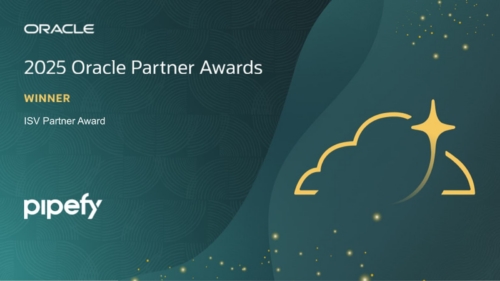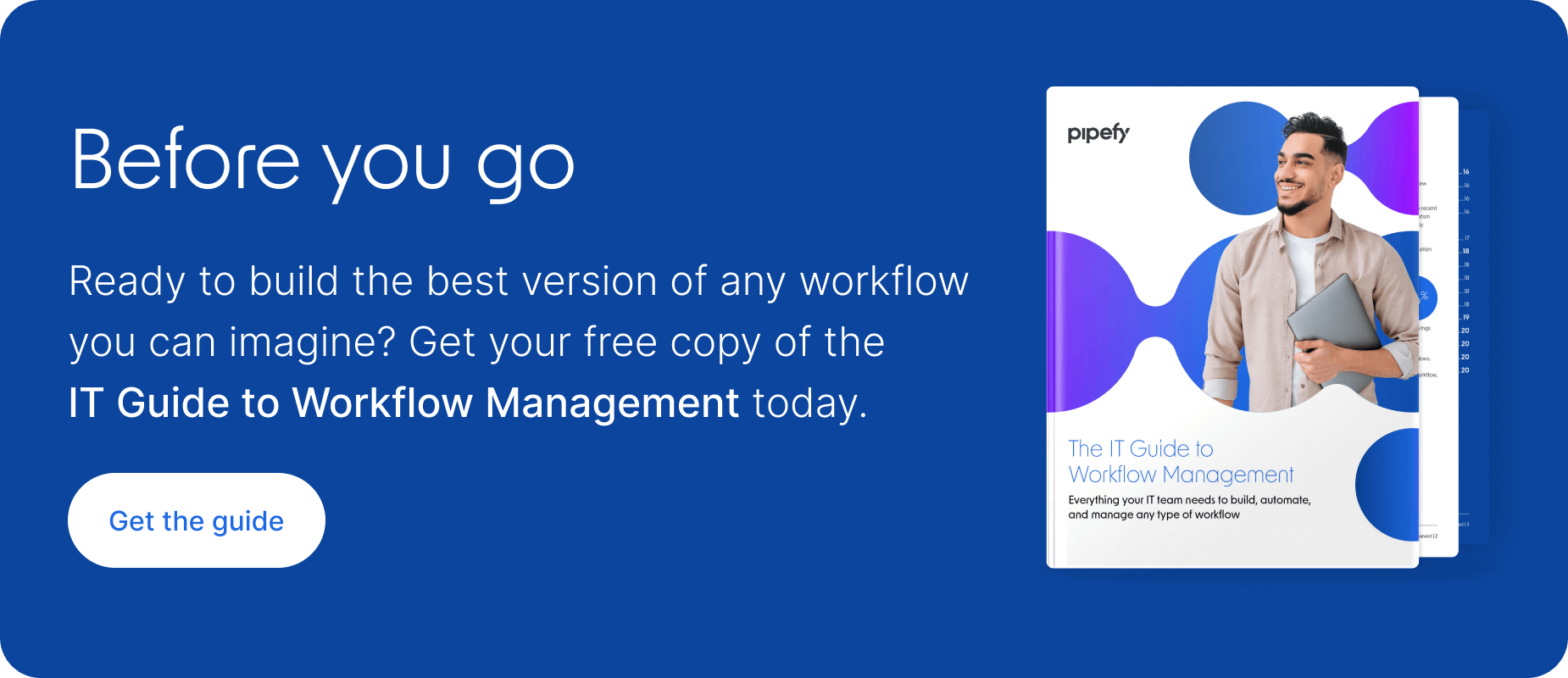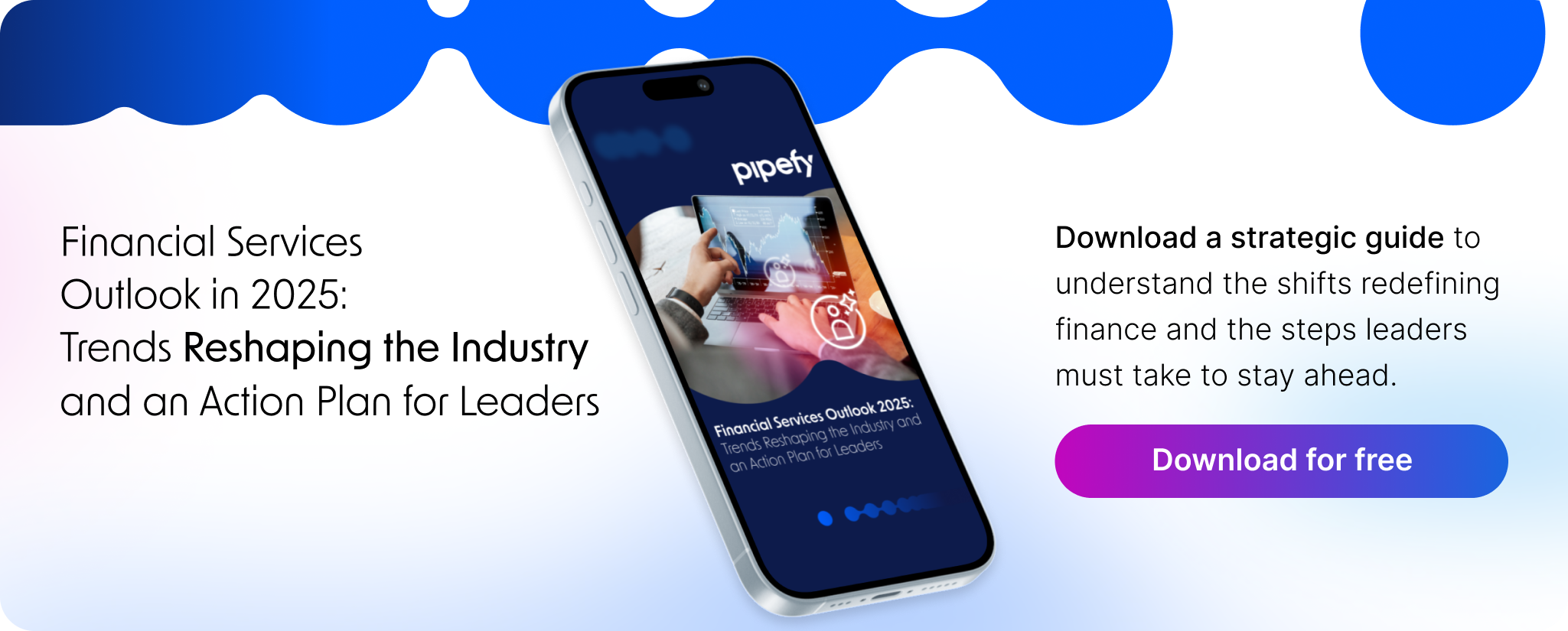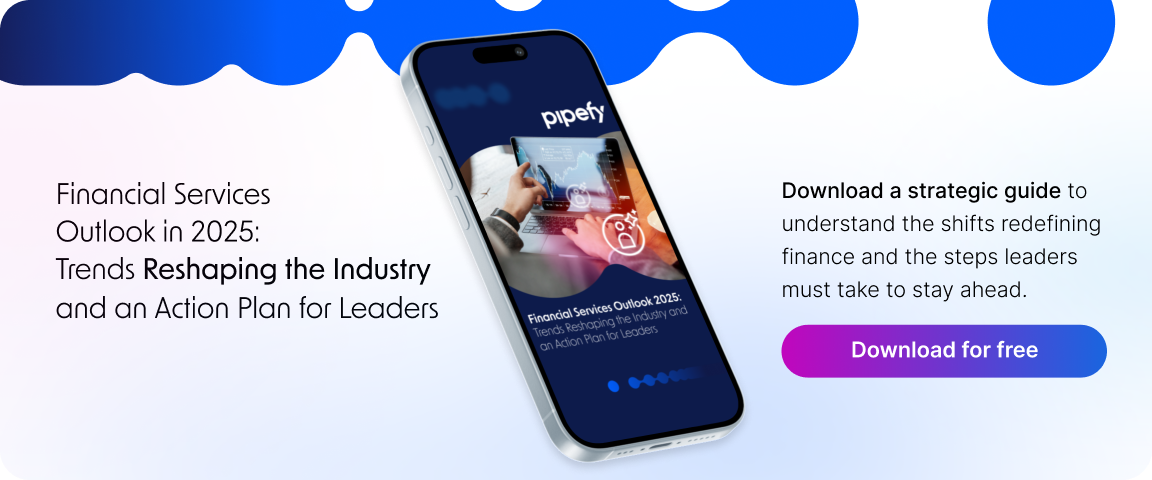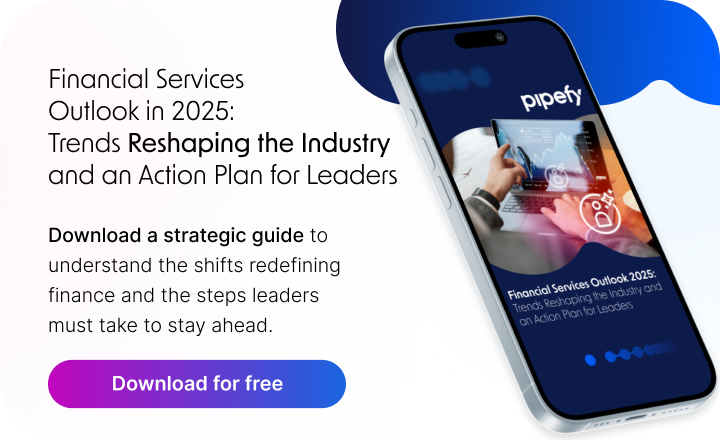
In today’s corporate landscape, the pressure for efficiency, scalability and security is increasingly larger. Organizations need to deal with complex processes, multiple systems, and high volumes of real-time data. In this context, Business Orchestration and Automation Technologies (BOAT), an ecosystem that combines process orchestration and intelligent automation to drive tangible results.
The BOAT concept goes beyond simple task automation. It creates an integrated, scalable, and secure infrastructure capable of aligning people, data, and technology around strategic objectives. Throughout this article, we’ll explore in depth what BOAT is, its capabilities, practical benefits, and how platforms like Pipefy, with their AI Agents, connect to this ecosystem.
What is BOAT?
Business Orchestration and Automation Technologies (BOAT) is the set of technologies and practices aimed to orchestrate and automate end-to-end business processes.
While traditional automation focuses on isolated tasks, BOAT creates a layer of intelligence that connects systems, data, and people. It ensures processes flow in a coordinated manner, eliminating bottlenecks and reducing manual dependencies.
In practice, BOAT integrates different components such as:
- Process Automation (BPA and RPA)
- AI Agents for autonomous and assistive decisions
- Integrations with corporate systems (ERP, CRM, HRIS, etc.)
- No-code/low-code workflow management
- Security and compliance built into flows
The importance of BOAT platforms in business processes
Modern companies operate in increasingly complex ecosystems, which involve:
- Diversity of tools (ERP, CRM, legacy systems).
- Pressure for operational efficiency in competitive markets.
- Need for compliance and regulatory security.
BOAT emerges as a response to these challenges, creating a centralized orchestration environment which ensures consistency, reduces rework and allows for quick adaptations to market changes.
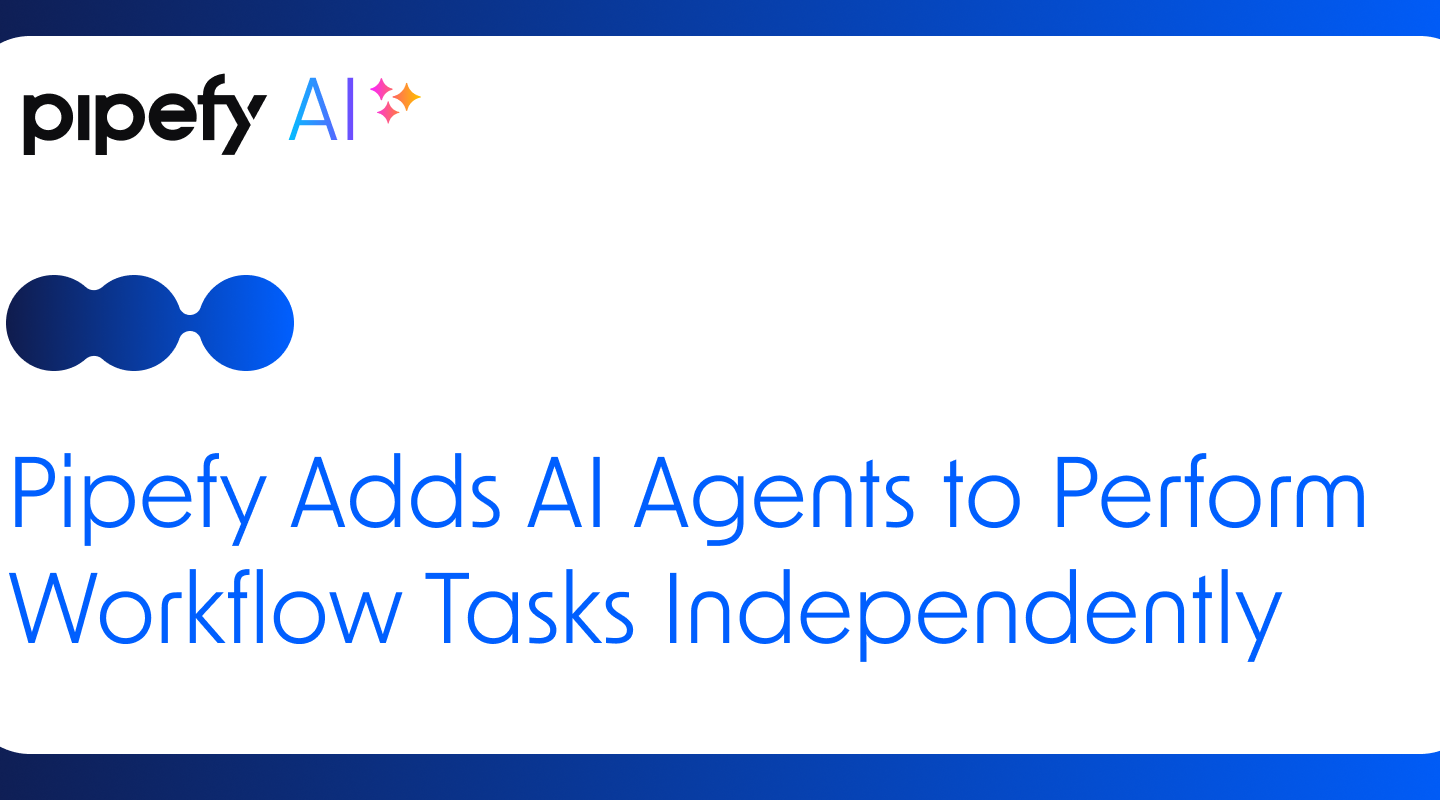
Benefits of using BOAT platforms: efficiency, cost reduction and risk mitigation
Implementing a BOAT ecosystem brings immediate and sustainable benefits:
- Operational Efficiency
- Workflows up to 4x faster.
- Reduction of up to 85% of manual effort in critical processes.
- Cost Reduction
- Savings on labor in repetitive tasks.
- Reduction of up to 40% in the development time of new workflows.
- Risk Mitigation and Security
- Real-time monitoring.
- Standardization of flows that reduces human errors.
- Built-in audit and compliance layers.
What are the main components of BOAT platforms and how do they work together?
BOAT platforms relies on multiple technological pillars. The main ones include:
- Process Orchestration via Workflow: ensures that each activity occurs at the correct time and sequence.
- iPasS (Integration Platform as a Service): integrates different systems, applications, and data centrally, without the need to manually build point-to-point integrations. For example, it connects Pipefy with other platforms like Salesforce, HubSpot, Slack, or Google Sheets.
- AI Agents: bring intelligence to predictive analysis and decision-making
- No-code/low-code platforms: democratize automation and reduce dependence on IT.
When these components work together, BOAT creates an agile, collaborative, and intelligent ecosystem.
The main capabilities of BOAT platforms
Among the capabilities that most impact business, the following stand out:
- End-to-end automation (do back-office to front-office).
- Scalability, adapting to the organization’s growth.
- Real-time visibility, with smart dashboards and reports.
- Flexibility for adjustments without the need for large IT teams.
- Native integration with security and regulatory compliance.
How automation optimizes processes on BOAT platforms
Automation is the engine of BOAT. By eliminating manual tasks, it:
- Release teams for strategic activities.
- Reduces human errors in repetitive processes.
- Ensures consistency in critical flows such as contract approval or customer onboarding.
- Allows scalability, since processes can grow without proportionally increasing operating costs.
Comparison: manual processes vs. BOAT processes
| Aspect | Manual Processes | Processes with BOAT |
| Execution time | Slow, people dependent | Agile, automated in real time |
| Operating cost | High, requires more labor | Reduced, automated repetitive tasks |
| Risk of error | High, subject to human error | Low, standardized and auditable |
| Scalability | Limited | Scalable with minimal human intervention |
| Compliance | Difficult to monitor | Integrated, with automatic records |
The role of AI Agents in BOAT platforms
AI Agents are the difference that transforms BOAT into something more than just automation. They act as autonomous and intelligent entities, capable of interacting with data, systems and people, creating a cognitive layer over workflows.
While robotic automation (RPA) is limited to performing pre-defined repetitive tasks, AI Agents have adaptive capacity: They analyze contexts, learn from historical patterns, and adjust their actions based on new data. This makes them essential for companies to achieve not only efficiency but also operational intelligence.
Practical functions of AI Agents within BOAT solutions
- Predictive analysis: identify risks in financial or compliance processes, signaling points of attention before problems occur.
- Assisted decision-making: suggest alternatives for contract approvals or prioritizing support tickets, increasing assertiveness.
- Autonomous execution: process data in real time, respond to customers on digital channels or automatically validate documents.
- Continuous learning: the more they interact with data and processes, the more refined their insights and recommendations become.
Direct Benefits of AI Agents
- Speed:decisions are made in seconds, reducing bottlenecks.
- Scalability:allow processes to be multiplied without proportionally increasing the team.
- Security:identify patterns that may indicate fraud or errors, mitigating risks.
- Personalization:adapt to each business area, be it HR, finance, legal or customer service.
In practice, AI Agents in BOAT act as digital colleagues for human teams, expanding execution capacity without replacing human supervision. This creates an environment where work is more strategic and analytical, and less operational.
Why Pipefy integrates with BOAT
Pipefy is positioned as an essential platform within BOAT by offering complete process orchestration, no-code/low-code automation and integrated artificial intelligence.
The biggest advantage of Pipefy is its flexibility: Any business area—from finance to HR, legal, and customer service—can design, execute, and optimize processes without relying solely on IT. This democratizes automation and accelerates digital transformation.
Today, Pipefy fits into the BOAT ecosystem as it is a no-code/low-code platform for workflow management, evolving to incorporate automation, integration and AI Agents. This fits the Gartner description: suppliers that come from an origin (ex. BPA/LCAP) and expand for BOAT.
But what are the main characteristics of this category? Here’s what you’ll see now:
Skill in multi system environments
- Solutions to the BOAT ecosystem are strong in interoperability, because they are not created as dated suites.
- Pipefy connects with ERP, CRM, HRIS, and legacy systems via native integrations and APIs, without imposing vendor lock-in.
Agility and focus on specific results
- BOAT ecosystem solutions are lighter, faster and more accessible, ideal for companies that require automation results without restructuring the entire stack.
- Pipefy, as a BOAT solution, offers short time-to-value, prompt flows and no-code customization, empowering citizen developers and allowing business areas to orchestrate their processes.
Practical benefits of Pipefy on BOAT
- Cost reduction:Repetitive tasks and manual approvals no longer consume the time of specialized teams.
- Greater productivity:Workflows become up to 4x faster, freeing up resources for strategic activities.
- Autonomy of business areas:teams do not depend on the IT queue to innovate and create new processes.
- Agility in digital transformation:New workflows can be implemented in days, not months.
Application examples
- Financial:automation of accounts payable and bank reconciliation, reducing human error.
- RH:standardized employee onboarding, reducing integration time.
- Legal:contract management with automatic alerts for deadlines and regulatory compliance.
- Customer service:automatic ticket triage based on urgency and customer profile.
When integrating Pipefy and AI Agents in a BOAT ecosystem, companies achieve not only operational efficiency, but also resilience and adaptive intelligence, fundamental in dynamic business environments.
Are you ready to take your company to the next level of efficiency and innovation?
Schedule a free Pipefy demo by clicking the button below and discover how BOAT can transform your business processes.
FAQ: Business Orchestration and Automation Technologies (BOAT)
1. What differentiates BOAT from traditional automation?
BOAT goes beyond automating isolated tasks, creating an intelligent orchestration layer that connects systems, data, and people.
2. Which companies can adopt BOAT?
From small, growing businesses to large corporations, BOAT is scalable and flexible for a variety of contexts.
3. Do AI Agents replace people?
No. They enhance human work, automating repetitive tasks and providing insights for more strategic decisions.
4. How does Pipefy connect to BOAT?
Pipefy offers no-code automation, integration with corporate systems, and AI Agents, making it an essential enabler for implementing BOAT.
5. Is implementing BOAT expensive?
In fact, the gains in efficiency, cost reduction, and risk mitigation quickly outweigh the initial investment.




